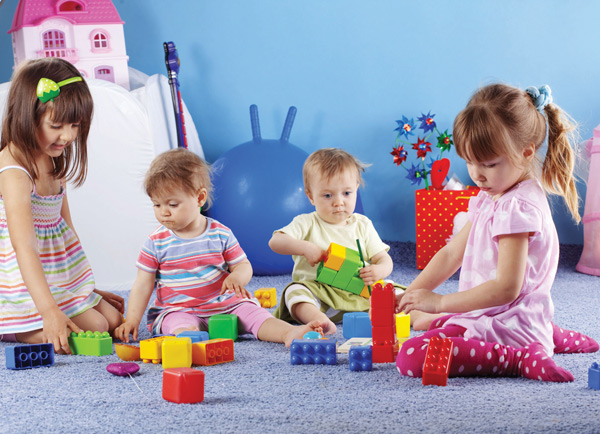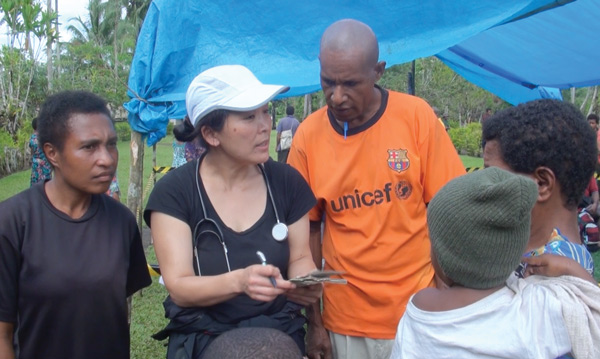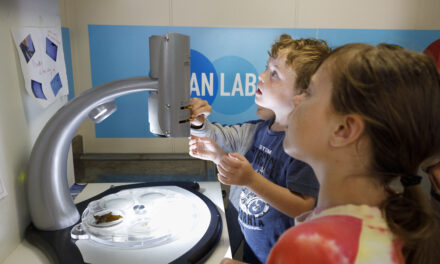There are so many choices for childcare in our community. Preschools, long day care centres, occasional care centres, family day care centres, private care options such as nannies and au pairs… negotiating the choices feels like a bit of a minefield.
Like many working mums, I know, striking the right balance for childcare for my children has not been easy. But I’m not in need of a babysitter. Lots of my friends have found economy and convenience in an au pair because, by the time you are paying for two or more childcare places, you might be able to afford to employ private help.
Still more (myself included), rely on the dedication and generosity of grandparents to help with the responsibilities of children. I will always treasure the special bond my children have with each of their grandparents. I know how lucky I am that they are nearby.
But there are some things that even a grandparent cannot give.
For me the term “childcare” de-emphasises the crucial role of early childhood education. Research shows that we learn more when we are four than at any other stage of our life. By the time a child turns five, most of their intellect, personality and social skills – the foundations of their life – have already been learned.
Finding a childcare place for my three and four-year-old children has been about much more than finding someone to look after them while I go to work. I am looking for quality early childhood education and I need to balance that against the need for long hours of care so that I can maintain my paid job.
The reality is that, in my situation, there was no one-stop-shop solution. So, in the course of a week, I patch together a mix of mummy-time, time spent with grandparents who help with pick-ups and drop-offs, time in a long day care centre and some time in a community-based, not-for-profit preschool.
Most long day care centres offer a preschool program between the hours of 9am and 3pm and then extended hours of care either side of that. It is convenient and on face value it is more affordable.
Affordability is a huge issue. It can cost more than $110 per day for a long day care place (this usually includes lunch, snacks and nappies). With two pre-schoolers, we really had to sit down and do the sums around whether it was cost effective for me to go back to work at all.
Long day care, for the moment, qualifies for a federal government 50 per cent childcare rebate. Given that we are rapidly descending into pre-election mode, I’ll be listening very carefully to hear whether or not that rebate stays or goes.
Many community-based preschools are doing it tough. The shorter hours of care and the absence of the rebate mean that on face value it is less affordable and less convenient. And yet when you walk into a not-for profit, dedicated preschool it has a different feel. Something I can’t quite put my finger on. It’s really something that you have to see for yourself.
I have to say that I have found the community-based preschool has been the model that has sat best with my ideas about early childhood education. The emphasis on community has meant that the partnership between parent, child and educator has genuinely flourished. My family has been embraced into a setting where quality education and genuine care are foremost in the philosophy of the place.
That’s not to say it is the model that works best for everyone. No two children are exactly alike and neither are their educational needs. That’s why the most important thing about ensuring the future of quality early childhood education in Ku-ring-gai is about maintaining diversity and choice for families.
It takes all kinds of centres, preschools, long day care centres, family day care, for-profit, not-for-profit, all kinds of choices to weave a fabric that is just right for a diverse community.
The best solution for my kids has not been the easiest choice for me. My husband dashes off to work early some days in order to be home in time for school pick-ups, I go into work later, sneaking in a load of washing before dropping the kids off in the morning and then making up my hours at the other end of the day. This kind of chaos somehow works for us.
So here’s my advice:
[list style=”square”][list_item]Be open – check out all the options, go and have a look, don’t be afraid to ask questions.[/list_item][list_item]Be confident – trust your gut. If it doesn’t feel right, it might not be right for you.[/list_item][list_item]Be excited – your little person is taking important early steps to independence.[/list_item][/list]
by Alison Gates*
*Alison Gates is a mother of three, a resident of Ku-ring-gai and an academic at Charles Sturt University.












